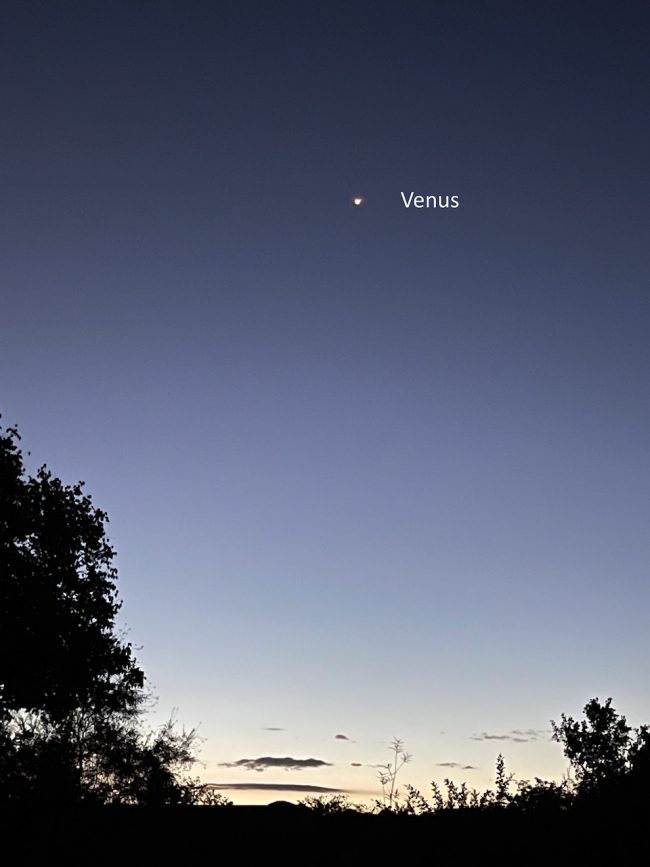
Greatest brilliancy for Venus is a treat! Watch for Venus in the west after sunset around mid-February 2025.
Venus brightest in the evening sky, around February 16
Venus is the brightest planet. It outshines any other object in our sky, except for the sun and moon. And it’s dazzling around February 16, when it’s brightest in the evening sky for 2025. You can’t miss Venus! Look for it in the sunset direction on any clear evening around then. When it’s this bright, Venus appears as an eerily eye-catching beacon in the evening sky. It’s visible not just in a dark sky, but in bright evening twilight as well.
Astronomers call the February 16 event a greatest brilliancy of Venus.
Venus will reach its peak in brilliancy – at magnitude -4.6 – on February 16. It won’t appear this bright to us again until April 2025, when it’ll reside in the east before sunrise.
Venus after sunset in 2024
Venus was in our morning sky when 2024 began. It left the morning sky – passing between the sun and us – on June 4. Astronomers called the June 4, 2024, event an superior conjunction of Venus.
And, by late July, Venus emerged in the twilight glare at dusk. It will remain visible in the evening sky throughout the rest of the year. Greatest elongation – when Venus will be farthest from the sunset – happens on January 9-10, 2025. Then, Venus will quickly sink toward the sunset as it races toward its sweep between the Earth and sun around mid-March 2025.
Earth and Venus are constantly moving in their orbits around the sun. Venus moves faster. And its orbit is smaller. Since its superior conjunction on June 4, Venus has been catching up with Earth in its orbit.
What is greatest brilliancy?
Greatest brilliancy for Venus is a combination of two factors: illumination and disk size. Remember … Venus was at superior conjunction – on the opposite side of the sun from Earth – on June 4, 2024. At superior conjunction, when Venus is on the far side of the sun from us, it’s at full phase and its disk size is always small. It emerged in the evening twilight in late July.
Now at greatest brilliancy, we’re not seeing a fully illuminated Venus. Instead, as seen through telescopes – as Venus races toward Earth – its phase has been decreasing, like a tiny waning moon. Meanwhile, again as seen through telescopes, the disk size of Venus has been increasing as the planet comes closer.
Greatest illuminated extent. It’s only when we see Venus as a crescent that this world comes close enough to us to exhibit its greatest illuminated extent, at which time its daytime side covers the greatest area of sky. And that means that Venus is brighter around now than at any other time during its approximate 8-month reign in the evening sky.
Disk size. Remember, again as seen through a telescope, the disk of Venus increases after superior conjunction. In July, 2024, Venus was around a 10-arcsecond gibbous disk through telescopes. At its greatest brilliancy, Venus will be around a 40-arcsecond crescent disk.
So greatest brilliancy for Venus is a combination of maximum phase and disk size. The two combine to give us a bright planet Venus.
Then, as it races toward us, the phase continues to decrease … but the disk size increases. So Venus will appear a smidgeon fainter to us a month from now, and fainter still (but still very bright!) until is slips away in in the sun’s glare in March 2025.

When greatest brilliancy happens
Venus’ greatest illuminated extent – or greatest brilliancy – in our evening sky always happens about a month before – and after – Venus reaches inferior conjunction. It’s next inferior conjunction – when it’ll move to the morning sky – is March 22, 2025. It’ll reach its greatest brilliancy in the morning sky on April 24, 2025.

Venus charts for 2024, from Guy Ottewell
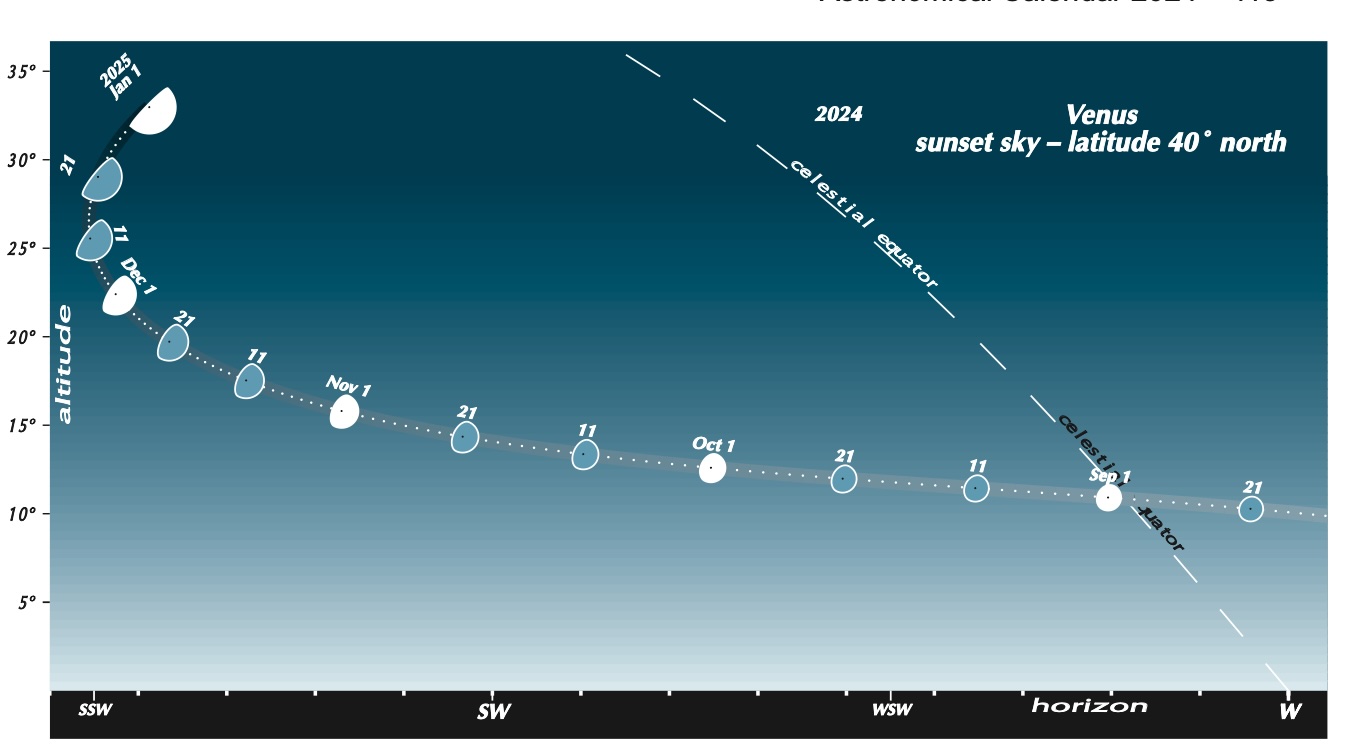
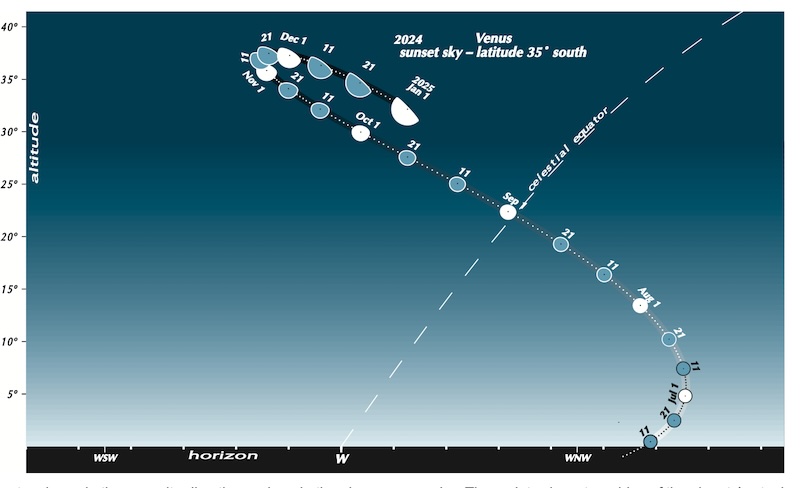
Venus photos from our community
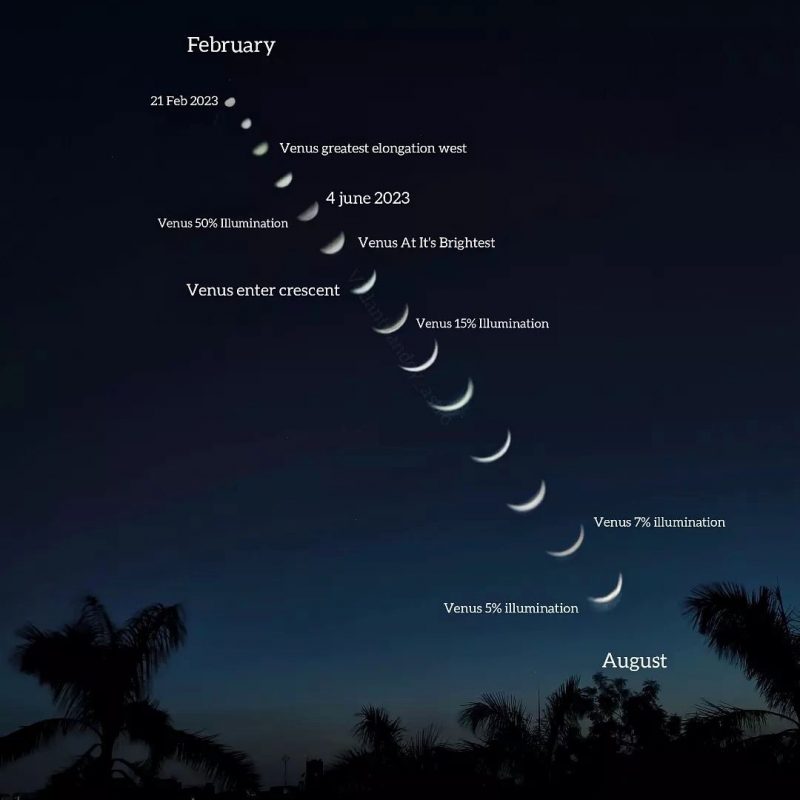
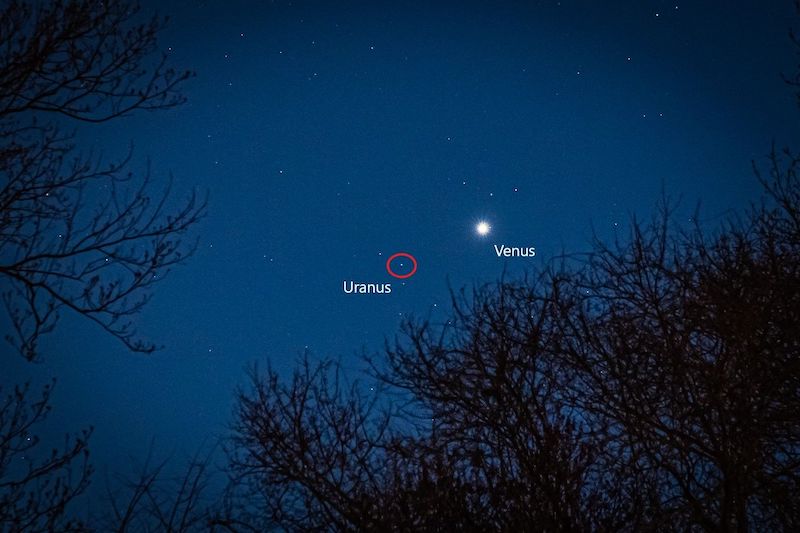
More Venus images
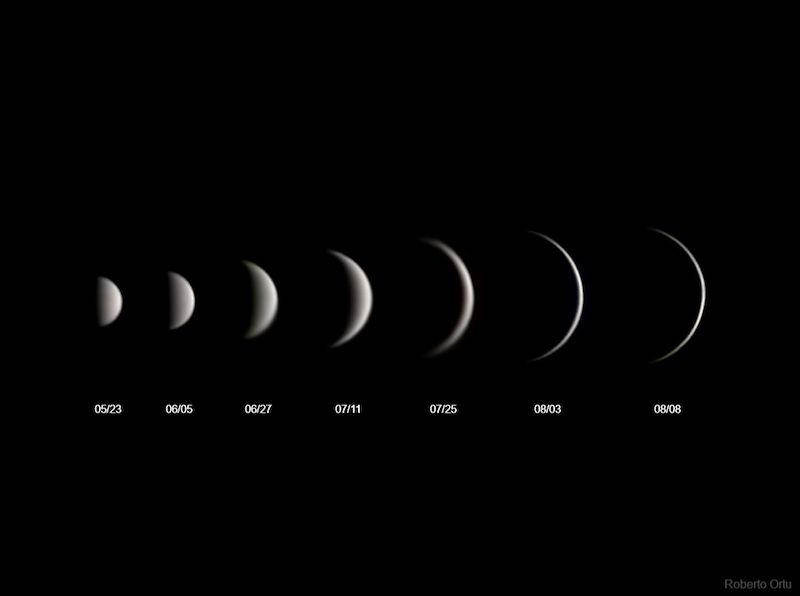
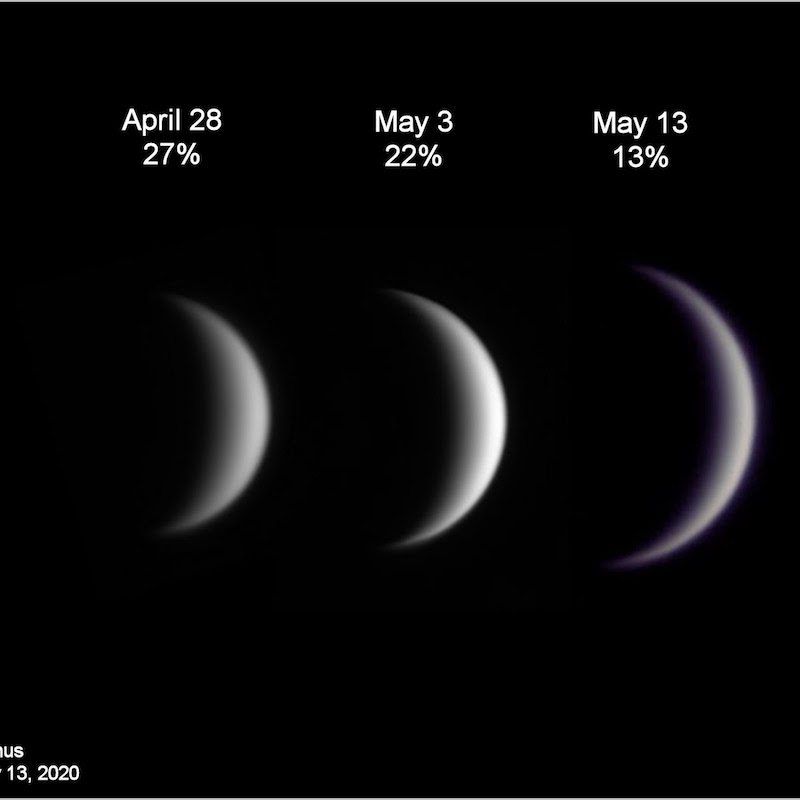

What’s next for Venus?
Venus will continue to blaze in our evening sky – after sunset – through March 2025.
Bottom line: Venus will be brightest in the evening sky around February 16, 2025. After that, Venus will be this at its brightest again in the morning sky in April 2025.











